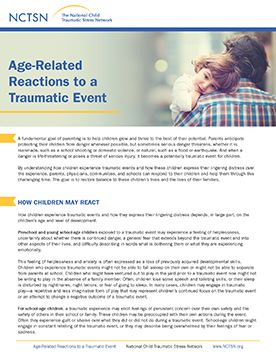
Age-Related Reactions to a Traumatic Event
Describes how young children, school-age children, and adolescents react to traumatic events and offers suggestions on how parents and caregivers can help and support them.
October was first declared as National Domestic Violence Awareness Month in 1989. Since then, October has been a time to acknowledge domestic violence survivors and be a voice for its victims. Domestic violence is prevalent in every community, and affects all people regardless of age, socio-economic status, sexual orientation, gender, race, religion, or nationality. Physical violence is often accompanied by emotionally abusive and controlling behavior as part of a much larger, systematic pattern of dominance and control. Domestic violence can result in physical injury, psychological trauma, and even death. The devastating consequences of domestic violence can cross generations and last a lifetime.
Although there has been substantial progress in reducing domestic violence, an average of 20 people are physically abused by intimate partners every minute. This equates to more than 10 million abuse victims annually. 1 in 3 women and 1 in 4 men have been physically abused by an intimate partner, and 1 in 5 women and 1 in 7 men have been severely physically abused by an intimate partner. Millions of Americans live in daily, silent fear within their own homes. In addition, every year millions of children are exposed to domestic violence. Domestic violence incidents affect every person within a home and can have long-lasting negative effects on children's emotional well-being, and social and academic functioning.
The National Child Traumatic Stress Network (NCTSN) has compiled a list of helpful resources for parents and caregivers, children and teens, mental health providers, child welfare workers, law enforcement professionals, educators and school staff, and policy makers.

Describes how young children, school-age children, and adolescents react to traumatic events and offers suggestions on how parents and caregivers can help and support them.
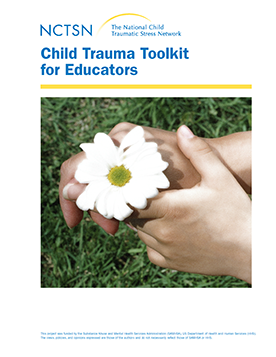
Provides school administrators, teachers, staff, and concerned parents with basic information about working with traumatized children in the school system.
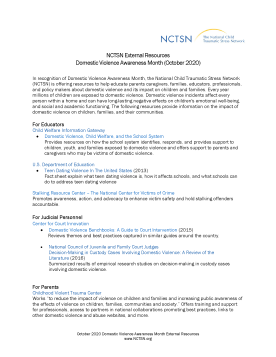
Provides external resources related to National Domestic Violence Awareness Month.
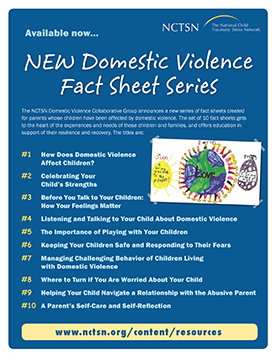
Offers support to parents whose children have been affected by domestic violence. This fact sheet series provides education to support their resilience and recovery.
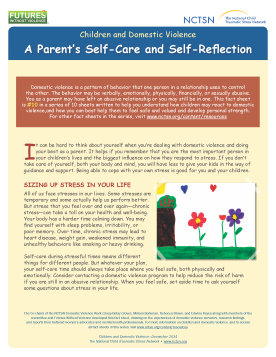
Provides ideas about self-care for parents impacted by domestic violence. This fact sheet points out how stress can affect parents and provides suggestions on how to deal with that stress.
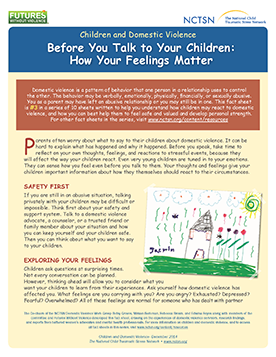
Provides parents information on how to talk to children about domestic violence. This fact sheet discusses the importance of recognizing and dealing with one's own feelings before talking to children.

Provides information on how to talk to children about domestic violence. This fact sheet helps you understand how children may react to domestic violence, and how to best help them feel safe and valued, and develop personal strength.
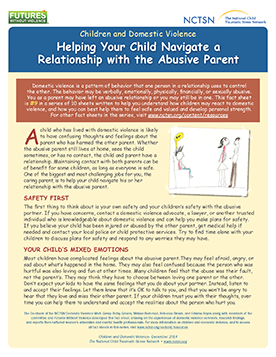
Provides parents information on how to talk to children about domestic violence. This fact sheet discusses how to help a child navigate a relationship with an abusive parent.
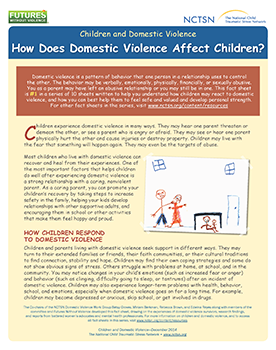
Provides parents with information on how to talk to children about domestic violence. This fact sheet discusses how domestic violence can affect children.
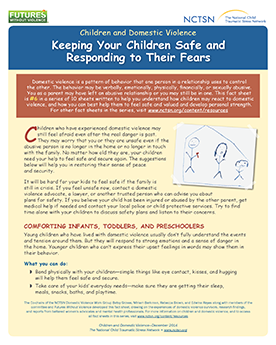
Provides parents with information on how to talk to children about domestic violence. This fact sheet discusses how to keep children safe and respond to their fears.
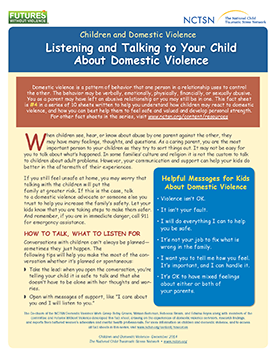
Provides parents with information on how to talk to children about domestic violence. This fact sheet discusses the importance of listening and talking to children about domestic violence.

Provides parents information on how to talk to children about domestic violence. This fact sheet discusses how to manage challenging behavior in children living in domestic violence situations.